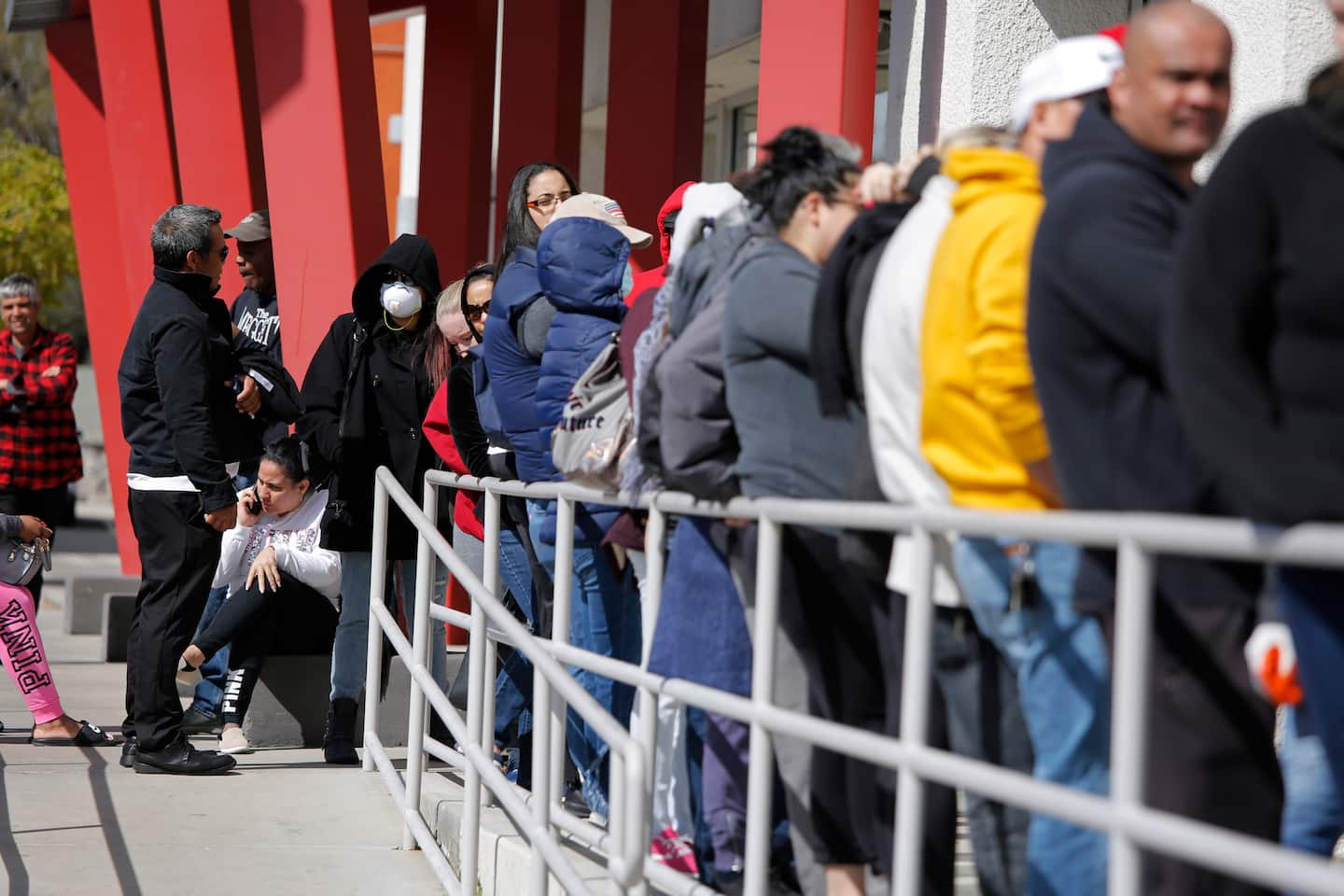The economy gained just 49,000 jobs in January as recovery sputters amid pressure from virus

The January data, released by the Bureau of Labor Statistics, is another reminder of how much ground the labor market still needs to regain to return to pre-pandemic levels. The U.S. now has more than 9.8 million fewer jobs than it did in February 2020, recovering less than half of what was lost during the early days of the pandemic.
At the anemic rate of growth in January, it would take more than 16 years to regain all of those jobs.
“We lost momentum over the winter and the wounds are getting deeper, which opens the door to more scarring,” said Diane Swonk, chief economist at Grant Thornton LLP. “Everyone keeps waiting for this to be a temporary phenomenon. But when you’re a year into it, you have to stop waiting for the next bounce and start worrying about what the long-term costs are — and how much this sets us back over the long haul.”
The report was marked by continued job loss in the leisure and hospitality industry, which shed 61,000 jobs, as layoffs hit amusement and gambling businesses, hotels, restaurants and bars.
Retailers lost another 38,000 jobs after an uptick during the holiday season. Health-care facilities lost 30,000 jobs; transportation and warehousing, 28,000.
“There’s no way to construe that this was not a weak jobs report,” said Joe Brusuelas, chief economist at the firm RSM.
The report also showed that the labor market was weaker late last year than initially estimated. There were 72,000 fewer jobs created in November than originally reported. In December, the United States lost 227,000 jobs rather than the 140,000 initially estimated, the BLS said.
Even a lone bright spot on the report came with an asterisk: 97,000 jobs were added in the professional and business services sector, but 81,000 of those were temporary.
The report comes as Democrats move closer to passing President Biden’s $1.9 trillion stimulus plan. The proposal would extend unemployment benefits through September, as well as provide $1,400 stimulus checks for many Americans.
It would also raise the minimum wage, increase the child tax credit, and provide rental assistance and money for nutrition programs, while setting aside hundreds of millions of dollars in aid to state and local governments.
Jared Bernstein, a member of the White House Council of Economic Advisers, told CNBC on Friday that the jobs report “underscores the urgent need for the president’s rescue plan,” citing particularly weak job growth in the private sector.
“That is a labor market stall,” he said. “We have a plan in the wings that can finally get American families and businesses to the other side of this crisis.”
Biden, in brief remarks, told reporters that the numbers underscored the scope of the economic crisis.
“This is about people’s lives. This is not just about numbers,” he said. “They are really hurting. Just look at all the number of people who are needing and seeking mental health help.”
The pandemic’s disproportionate impact on minorities and women were also reflected in the labor report.
Unemployment rates for minorities continues to significantly outpace the 6 percent rate of White people — 8.6 percent for Hispanics, 9.2 percent for Black people and 6.6 percent for Asians. Of the more than 4 million people who left the workforce in January, nearly 60 percent are women, Swonk noted.
And the data shows, many of the unemployed have been suffering for a long period.
About 3.5 million people once considered temporarily unemployed have now permanently lost their jobs, according to the BLS data. Of the overall 10 million people currently unemployed, about 40 percent have been out of work for more than six months. Meanwhile, the number of people filling new jobless claims remain well above pre-pandemic records, far outpacing previous crises.
And the disproportionate impact on low-income workers combined with the unique circumstances of the pandemic have perhaps helped conceal the true depths of the crisis, Swonk said.
“There is a false sense of security that work from home gives so many,” she said. “The divisions are much greater. Not only because low-wage workers were hit much harder, but you don’t see low-wage workers suffering the way you normally would. … It’s easier to discount it when it is lost in the numbers.”
Coronavirus cases have recently started trending down after the deadliest month so far during the pandemic, and economists expect that the declining caseload will speed an economic rebound in the spring. But economists remain concerned about the threats posed by new, more transmissible variants — another potential complication for the recovery.
The BLS report, which was based on data gathered in the first half of January marks the last of President Donald Trump’s tenure. According to the data, the U.S. economy ended with about 2.1 million fewer jobs than when Trump took office in 2017.
“The economy is slow getting off the starting blocks this year after a worse-than-expected decline in December,” said Daniel Zhao, a senior economist at Glassdoor Economic Research. “In some sense, today’s report is not a surprise because we know that the virus is in the driver’s seat. Pandemic has muted job gains for the last three months. It’s really about getting the pandemic under control before we can see sustained economic progress.”
Jeff Stein contributed to this report.
Correction: An earlier version of this story mistakenly said 4 million people left the workforce in January. About 400,000 people left the workforce in January. Four million people have left the workforce since February 2020.






